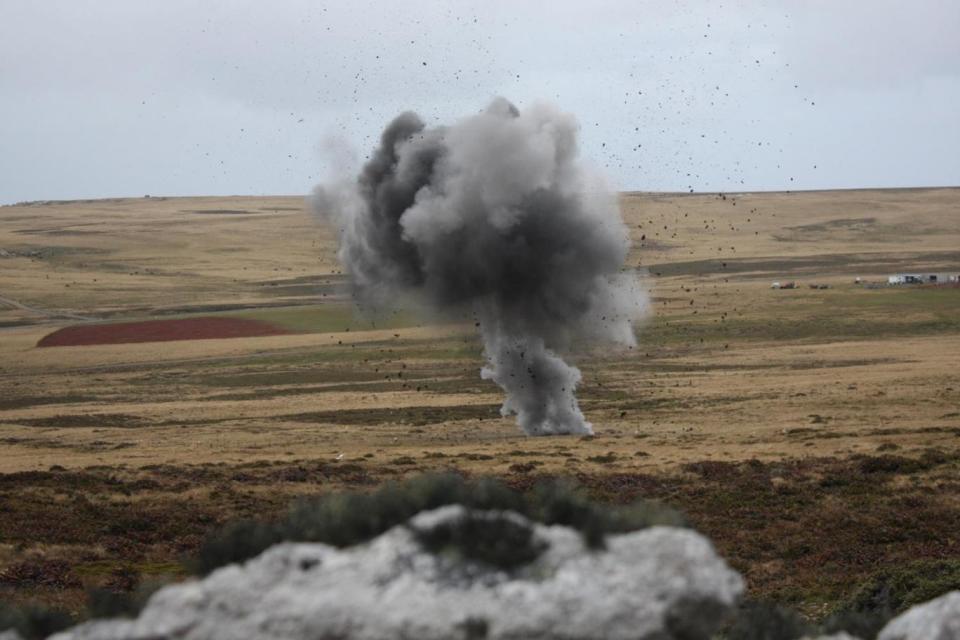Meet the team who cleared 20,000 landmines from the Falklands in two years

Two hundred landmines were blown up at Port Harriet, just south of Stanley in the Falklands last week — the latest clearance of some 30,000 mines laid by the Argentines in their brief invasion of the islands in 1982.
The project to clear mines, booby traps and unexploded ordnance has been showing remarkable progress over the past two years. It has not been reported in detail to date.
A team of some 106 mine clearers and staff from the Dynasafe-Bactec company destroyed 7,441 anti-personnel and 1,209 anti-tank mines in the period.
“We are through 70 per cent of the work, and 11,000 square metres of land have been returned to public use,” said Guy Marot, a former Royal Engineer officer, who is the programme officer for the Foreign Office, which is footing the bill.

“Unfortunately, the remaining 30 per cent of the work is likely to be the most difficult.”
These include minefields around Yorke Bay, a beach east of Stanley that is home to Magellanic penguins, fur seals and oyster catchers.
Port Howard and Fox Bay on West Falkland have minefields close to the settlements. Immediately after the conflict, many Falklanders thought it would be virtually impossible to get rid of the Argentine mines, making access to peat bogs for fuel and beauty spots inaccessible.
Adding to the gloom were rumours that the Argentines had indiscriminately scattered mines across the open moorland and rocks from helicopters and not bothered to mark most of the places they were laid.
Mr Marot and the Dynasafe-Bactec teams have checked these rumours thoroughly — even combing through reports, dispatches and broadcasts at the time made by myself and my late BBC colleague Brian Hanrahan.
"Much of it turned out not to be true — the Argentines were very professional in the way they laid the mines... recording them carefully because they intended to take them up again once they had secured the islands,” said Mr Marot.
British troops and specialists and Argentine prisoners managed to clear a large number of mines and unexploded ordnance in the weeks after the ceasefire — at a cost. Six men were killed or seriously hurt.
Down in minefield 91Alpha, project manager Julius Unsing, known since Army days as “Jugsy”, indicates a cache of plastic anti-personnel mines neatly arranged in a deep hole, laced with plastic explosives and several of the larger SB-33 anti-tank mines.
The command wire and detonators are carefully placed and checked by Phillimon “Philly” Gonamombe, operations manager in charge of a team of Zimbabwean experts.
We beat an orderly retreat to a nearby rock and your correspondent is given the honour of pressing the detonation switch.
With a dull thud, a plume of peat and mine shoots into the sky, and minefield 91Alpha has been cleared.

 Yahoo News
Yahoo News 
